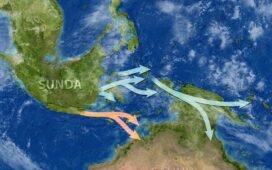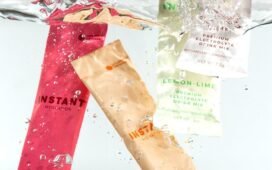
 The source of the Bronx River is now the Kensico Reservoir in Westchester County. From here the river flows south, passing 24 miles through White Plains, Scarsdale, Yonkers, and Bronxville until it reaches Bronx County, where it then empties into the East River, a tidal strait connected to Long Island Sound, between Hunts Point and Clason Point.
The source of the Bronx River is now the Kensico Reservoir in Westchester County. From here the river flows south, passing 24 miles through White Plains, Scarsdale, Yonkers, and Bronxville until it reaches Bronx County, where it then empties into the East River, a tidal strait connected to Long Island Sound, between Hunts Point and Clason Point.
The river gets its name from colonial settler Jonas Bronck. The river once originated in an area the Weckquasgeek called Quaropes (White Marshes).
It was once fed by Fulton, Manhattan Park, Davis and Tompkins Brooks, but since construction of the Kensico Dam in 1885 it has been cut off from its natural headwaters.
In the area known as the Aquehung (an indigenous name for the river), it is fed by Harts Brook and the north and south Fox Meadow Brooks. At Tuckahoe, it is fed by Troublesome Brook. At Bronxville, it is fed by Sprain Brook, its longest tributary system, which originates at Greenburgh Town Park.
According to the NYC Department of Environmental Protection: “At the beginning of the 18th Century, roughly 12 water mills were producing paper, pottery, flour, tapestries, and snuff along the Bronx River.”

 The construction of the New York Central Railroad in the 1840s turned the valley into an industrial corridor. During the 19th and 20th centuries, the river became a natural sewer into which industrial waste was poured every day.
The construction of the New York Central Railroad in the 1840s turned the valley into an industrial corridor. During the 19th and 20th centuries, the river became a natural sewer into which industrial waste was poured every day.
In the 21st century, environmental groups including the Bronx River Alliance have been working to return the river to a more natural state.
Under a November 2006, agreement, the municipalities of Scarsdale, White Plains, Mount Vernon and Greenburgh agreed to stop dumping sewage in the Bronx River by May 2007.
Urban runoff pollution continues to be a serious problem for the river.
In February 2007 biologists with the Wildlife Conservation Society, which operates the Zoo, spotted a beaver (Castor canadensis) in the river. A second beaver was found in 2010, the first since the 19th century.
In 2023 a pod of dolphins was seen swimming in the river.
Public Access
Although public access to the river is restricted as it passes through the NY Botanical Garden and Bronx Zoo, several of the parks that line the Bronx River shoreline provide access.
Shoelace Park, Scout Field, and Bronx River Pathway all offer access to the Bronx River’s freshwater sections above the dam at 181st street.
DEC’s Bureau of Fisheries conducts annual backpack electrofishing surveys along the freshwater portions of the Bronx River to assess the presence and distribution of different fish species.

 The Bronx River is generally a narrow and shallow urban waterway. Slim sections of riparian buffer straddle the river along each of its banks as it meanders its way along the Bronx River Parkway.
The Bronx River is generally a narrow and shallow urban waterway. Slim sections of riparian buffer straddle the river along each of its banks as it meanders its way along the Bronx River Parkway.
Although there are a few deep holes scattered throughout the river (mostly south of cross country parkway), river depth typically ranges from about 1-4 feet. Substrate mostly consists of soft sand with small cobbles and rocks mixed in as well.
Freshwater fish species present here include redbreast sunfish, white sucker, yellow bullhead, as well as American eel. The River is one of the only where white sucker or redbreast sunfish are found in the city.
The dam located at 181st street is a defining physical feature of the Bronx River, as it marks the divide between the freshwater section (north of the dam) and the brackish, tidally influenced section (south of the dam).
A fish ladder was erected at this site in 2015 as part of a restoration effort to help diadromous species such as alewives and blueback herring reach freshwater spawning habitat.
Below the dam, the river takes on new physical transformations. As it passes through Starlight Park it begins to widen, substrate shifts from sand to rock and rip-rap, and gradually the depth increases as it meets its mouth at the East River.
Anglers at Soundview Park are more likely to encounter marine species such as striped bass, bluefish, black seabass, tautog, porgy and summer flounder.
In the South Bronx, the river has become a popular destination for urban canoeing in New York City.
Illustrations, from above: High Bridge over the Harlem River, Manhattan-Bronx, New York City (looking north); a map of the Harlem River, shown in yellow; and a narrow section of the river in Westchester County.








Recent Comments